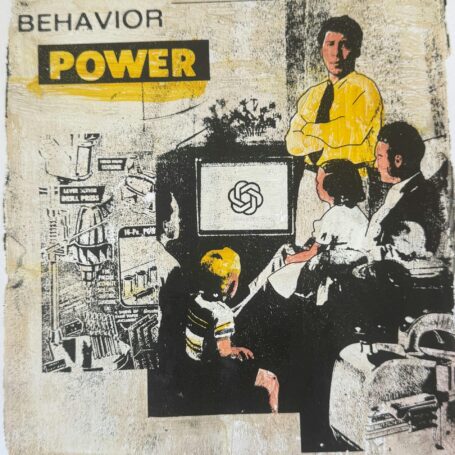Paper Is No Longer A Thing, But We Have Failed to Notice

Management and organization scholars tend to write increasingly long articles that few people have time to read, not to mention enjoy. I argue that we can do better when we break free from the shackles of an outdated paper-bound logic and adopt digitally-enabled logic.
This essay emerged while I was preparing another manuscript for submission and had to move all tables and figures to the end of the document, as prescribed by the norms of our discipline. Being a reviewer myself, I know how troublesome it is to jump from the text to the tables and back—perhaps multiple times—to evaluate a paper. Thus, I asked myself, why the convention?
After some investigation, I discovered that the convention regarding the placement of graphical content is an artifact of an obsolete printing technology. That realization led to another question: Is not the entire scheme of reporting research results in our discipline an artifact of outdated technology?
I argue that it is in the essay entitled “Organization and Management Scholars’ Technological Conservatism: Could we free ourselves from the shackles of paper-bound logic?” appearing in the journal Strategic Organization. We produce obscenely long papers, often extending 50 double-spaced pages, due to the common assumption that everything that matters needs to be contained in the main manuscript. This is because when academic journals came to be 300 years ago, the only way to distribute articles was to deliver printed journals to subscribers by post. The reader either got everything that mattered as part of the main manuscript or did not get it at all.
The current convention that envisions the manuscript as a self-contained universe produces a range of negative consequences extending beyond papers’ obscene length: many scholars seem to cite papers based on their abstracts or even title alone; reviewing literature takes lots of time; noncore research communities are badly served; new requirements on research transparency and openness are difficult to meet; and, finally, our papers are not particularly enjoyable to read.
I propose that we can do better once we realize that the advent of the internet means that all information can be accessed at all times. There is no longer a need to have everything you want to say encapsulated in the main manuscript. We could achieve more by adopting what I call a full package including three elements: a shorter main manuscript, richer supplementary materials, and a two-journal-page summary of the research. All three elements are intended to increase the pace of literature review and the transparency of our research, enable the training of new scholars, make better serving of noncore communities possible, while opening new avenues for scholars who want to share nonstandard supplementary materials (e.g., videos and images).
In addition, the last element aims to improve the cost/benefit equation for intermediaries such as journalists, bloggers, and YouTubers, thereby likely increasing our impact beyond the world of academia.
Replacing the current convention is unlikely to be easy, as even the smallest deviation from the “proper” form of a manuscript could cost a rejection. However, experimenting with the potential extended by ubiquitous information access is necessary, lest we want to be seen by future generations of scholars as Luddites sticking to the old technology for no reason.



































































































